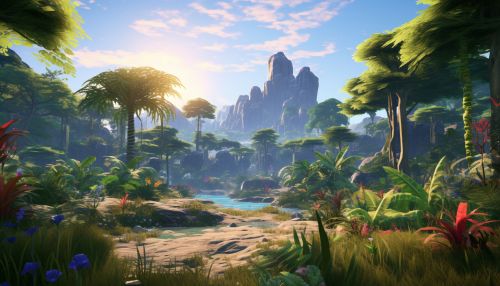Biome
Introduction
A biome is a community of plants and animals that have common characteristics for the environment they exist in. They can be found over a range of continents. Biomes are distinct biological communities that have formed in response to a shared physical climate. Biome is a broader term than habitat; any biome can comprise a variety of habitats.
Classification
Biomes are usually distinguished by abiotic factors such as climate, relief, geology, soils and vegetation. A biome is not an ecosystem, although in a way it can look like a massive ecosystem. If we consider the scale of interactions between the organisms and their environment, each biome can be composed of multiple ecosystems. The biomes are just a way to divide the Earth's surface based on life forms, and are not based on genetic, taxonomic or historical similarities unlike and beyond the more traditional levels of biological organisation: species - population - community - ecosystem - biome - biosphere.
Types of Biomes
There are different ways to classify biomes, some of which include:
Terrestrial Biomes
Terrestrial biomes, also known as land biomes, are those that occur on dry land. These biomes are differentiated based on the predominant vegetation, which is determined by the climate and geography of the region.
- Tropical Rainforests: These are characterized by the highest diversity of species. They can be found in the equatorial zone between the Tropic of Cancer and Tropic of Capricorn, within the equatorial belt and are characterized by high temperatures throughout the year, high humidity and high rain rates.
- Savannas: These are grasslands with scattered individual trees. Savannas maintain high temperatures throughout the year and are characterized by seasonal water availability, with the majority of rainfall confined to one season. They are found within the tropics and are most common in Africa.
- Deserts: These are areas with very low rainfall, that can support only a sparse and widely dispersed vegetation. Deserts can be hot or cold.
- Tundra: This is the coldest of all the biomes. Tundra comes from the Finnish word tunturi, meaning treeless plain. It is characterized by extremely low temperatures, very little precipitation (rain or snow), a short growing season, few nutrients, and low biological diversity.
- Temperate Forests: These are in regions where the climate changes a lot from summer to winter. Tropical rainforests are in regions where the climate stays constant all year long. Temperate forests are almost always made of two types of trees: deciduous and evergreen.
- Taiga: Taiga is the world's largest land biome, making up 29% of the world's forest cover. The largest areas are located in Russia and Canada. The taiga is the terrestrial biome with the lowest annual average temperatures after the tundra and permanent ice caps.


Aquatic Biomes
Aquatic biomes are those that occur in water. These can be further divided into two types: Freshwater and Marine biomes.
- Freshwater Biomes: These are of two types: Lotic and Lentic. Lotic refers to flowing water like rivers and streams, while Lentic refers to still or stagnant water like lakes and ponds.
- Marine Biomes: These include oceans, seas, coral reefs, and estuaries. Marine algae supply much of the world's oxygen supply and take in a huge amount of atmospheric carbon dioxide. The evaporation of the seawater provides rainwater for the land.
Biome Distribution
The distribution of biomes is governed primarily by climate. Soil type, topography and other factors also have to be taken into account. Biomes are often given local names. For example, a temperate grassland or shrubland biome is known commonly as steppe in central Asia, savanna or veld in southern Africa, prairie in North America, pampa in South America and outback or scrub in Australia.
Human Impact on Biomes
Human activities have significantly altered many biomes. Some of the ways humans can affect biomes include deforestation, urbanization, agriculture, and pollution. These activities can have devastating effects on the species that live in these biomes and can lead to a loss of biodiversity.
